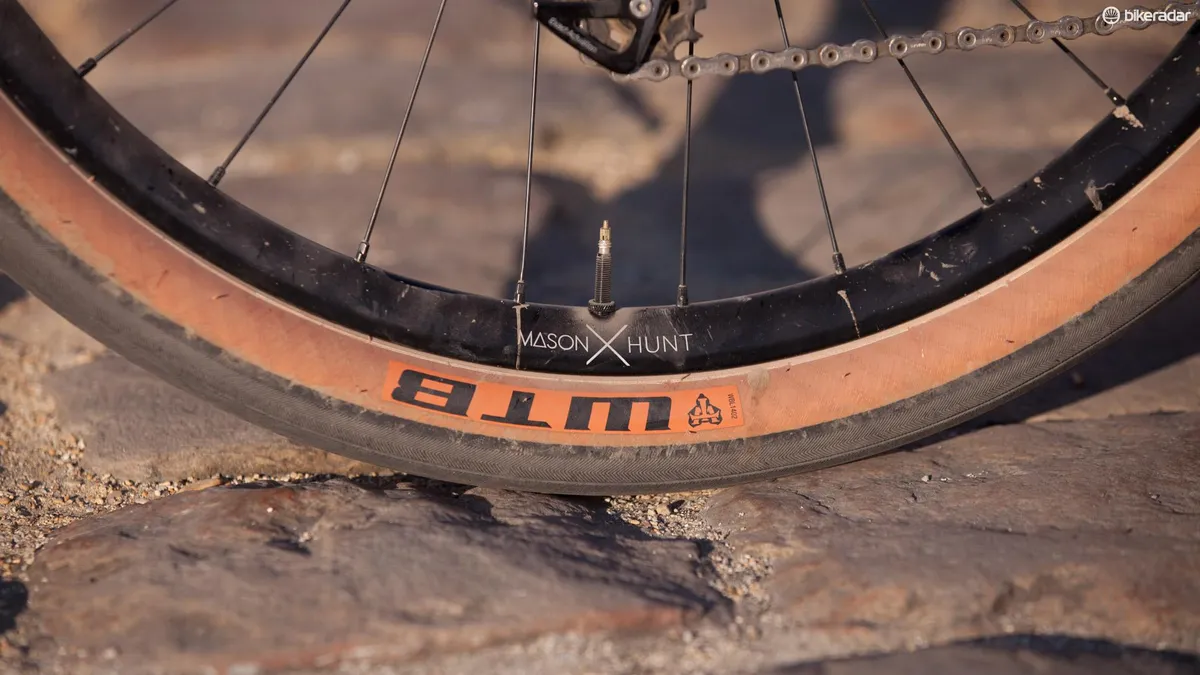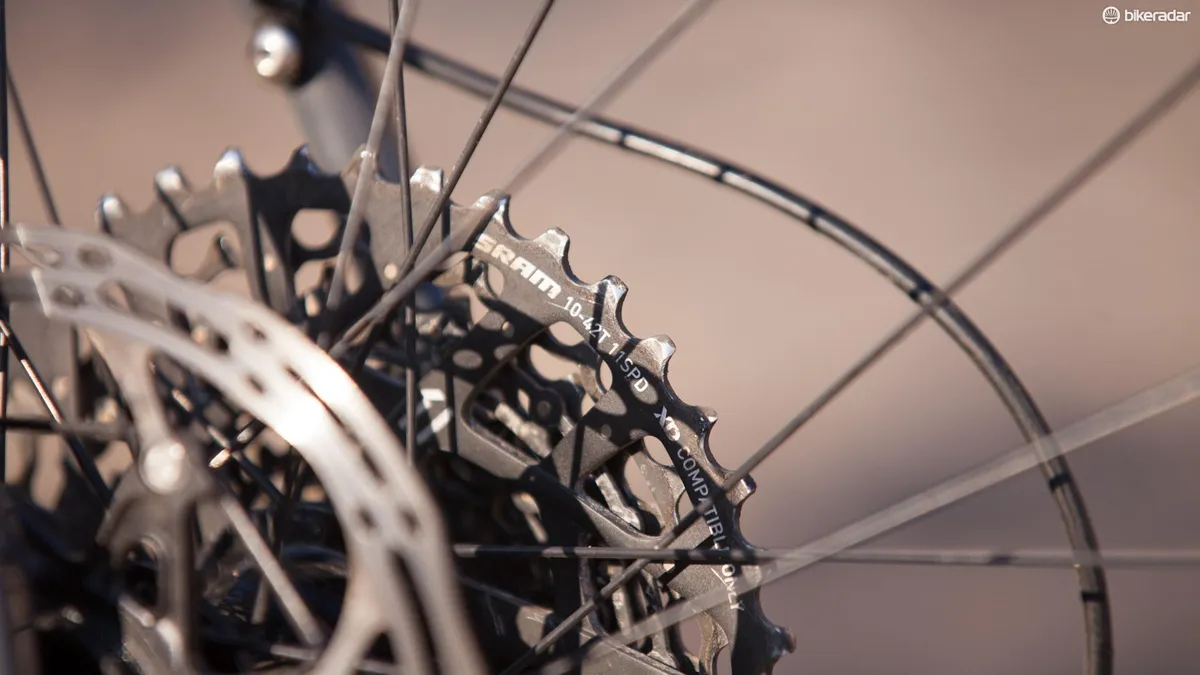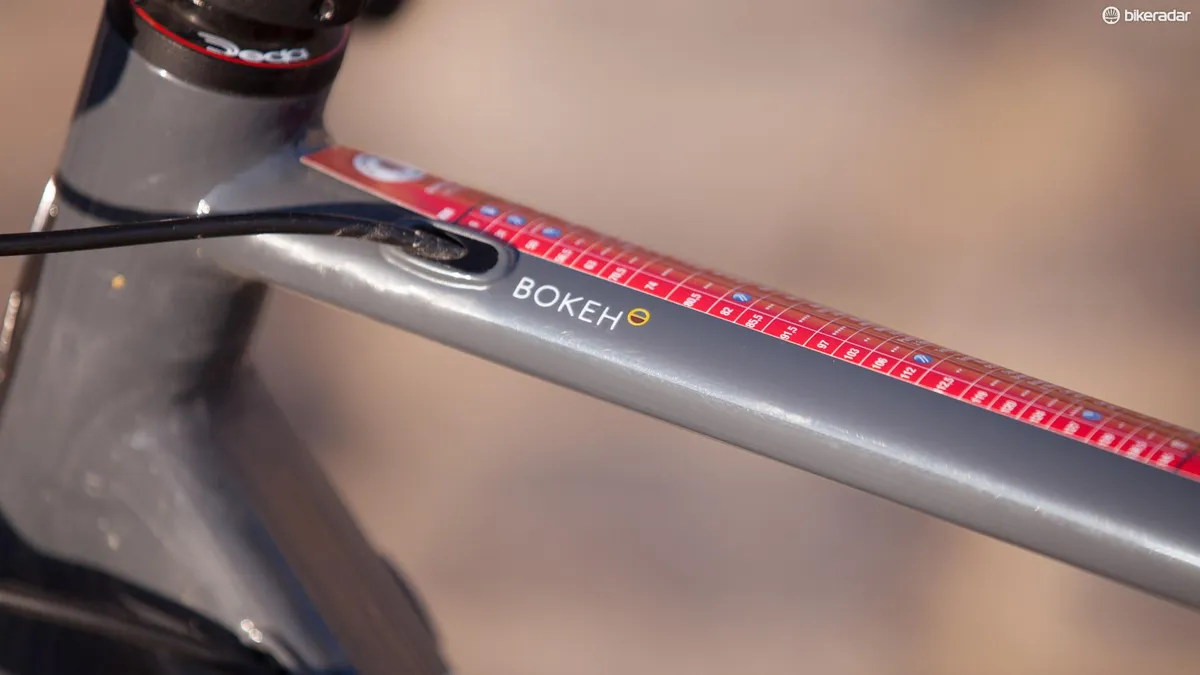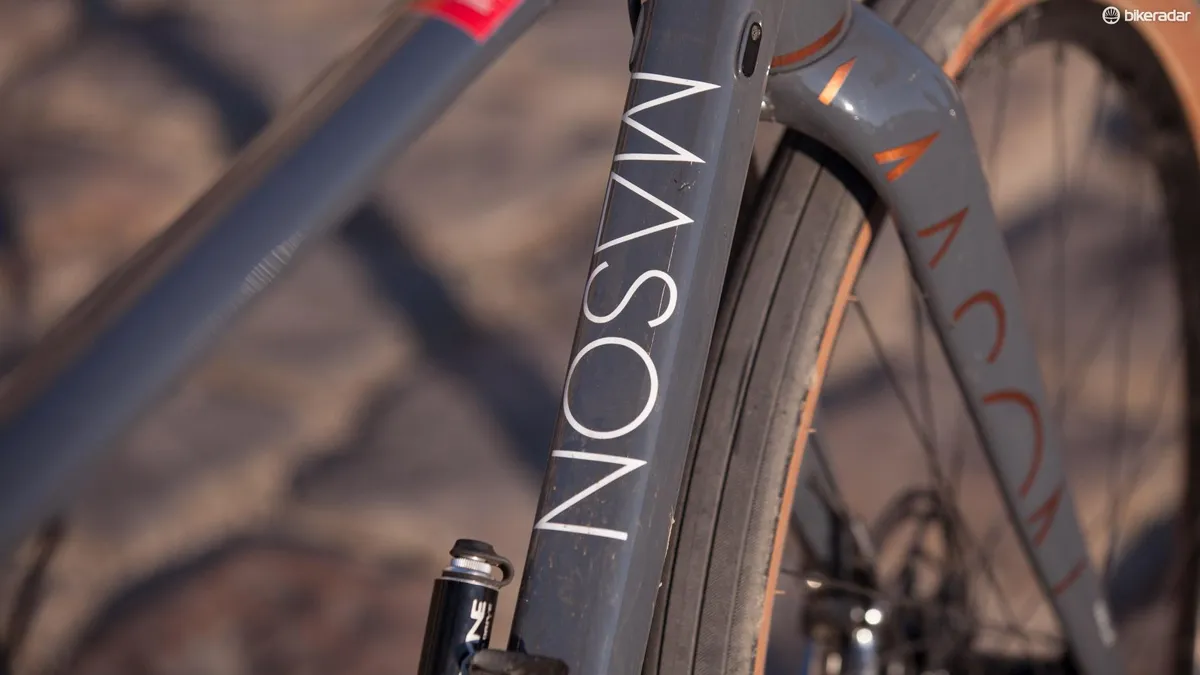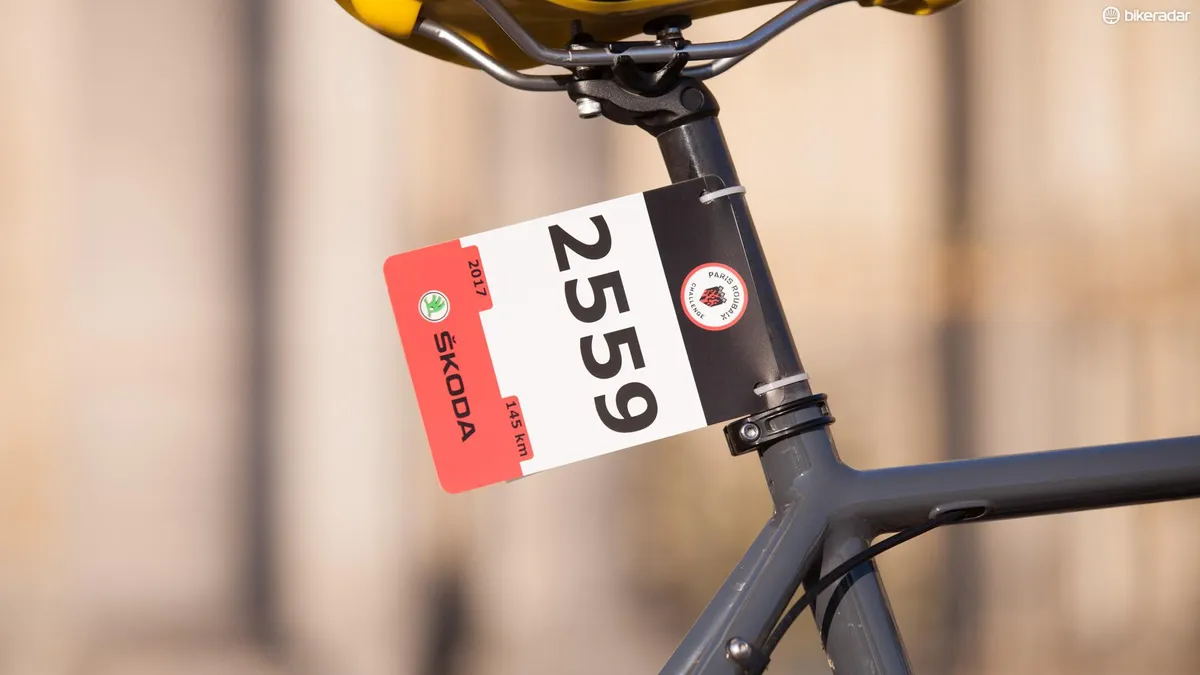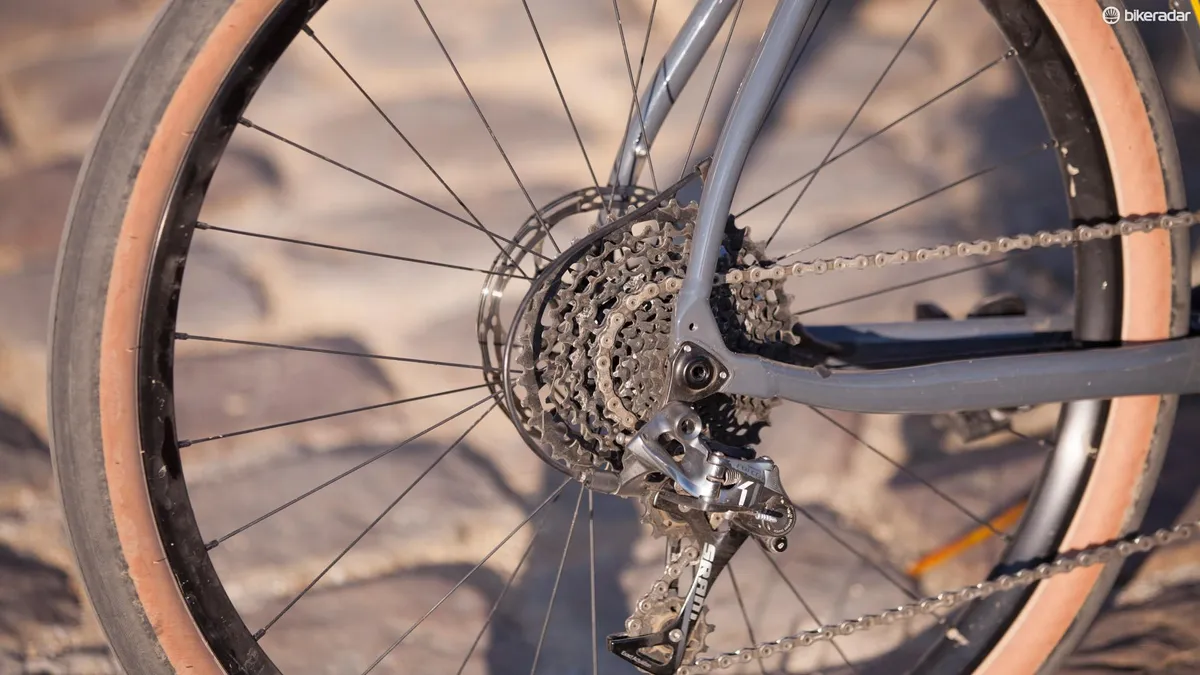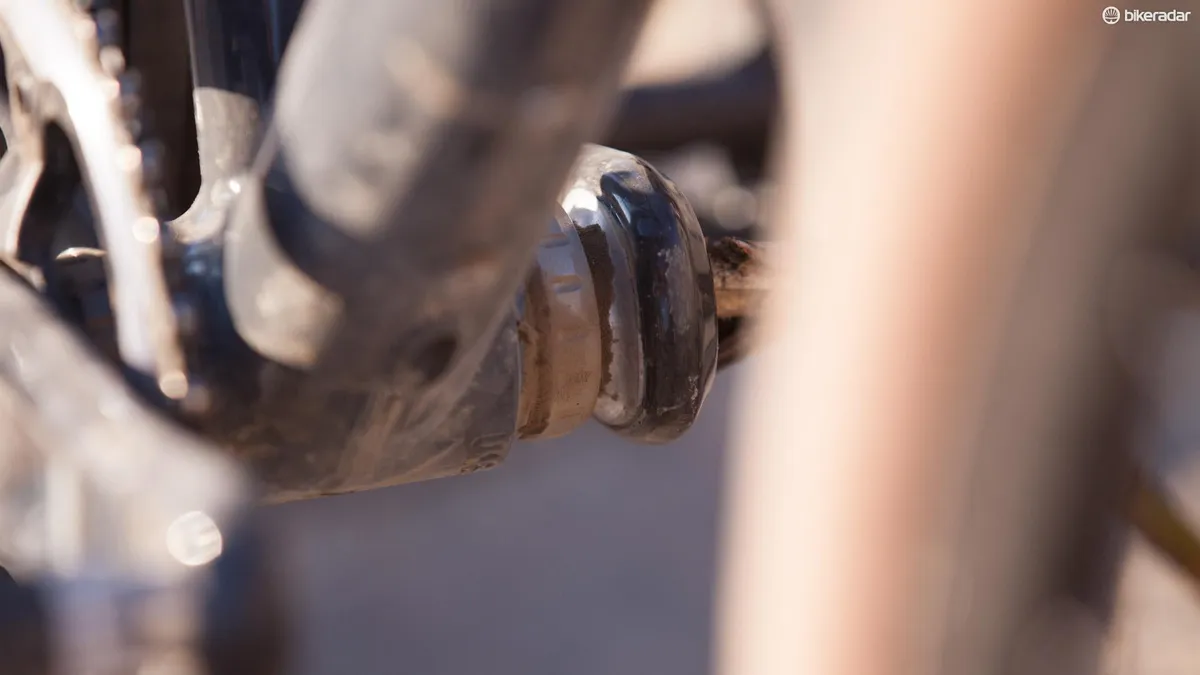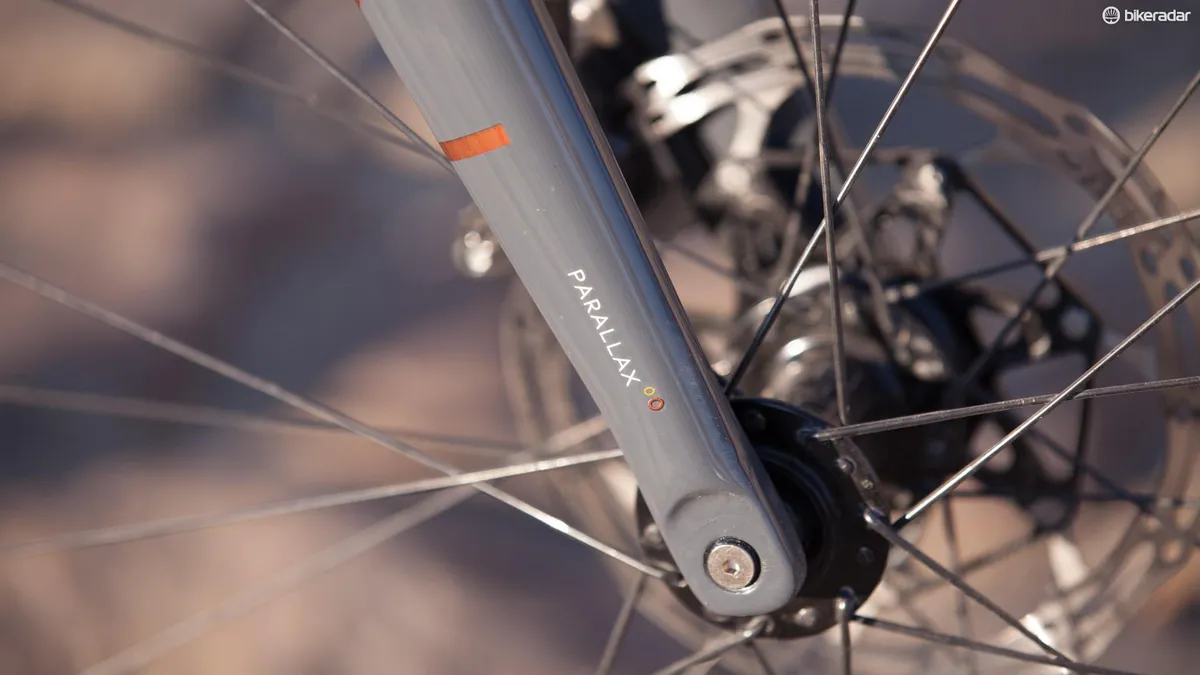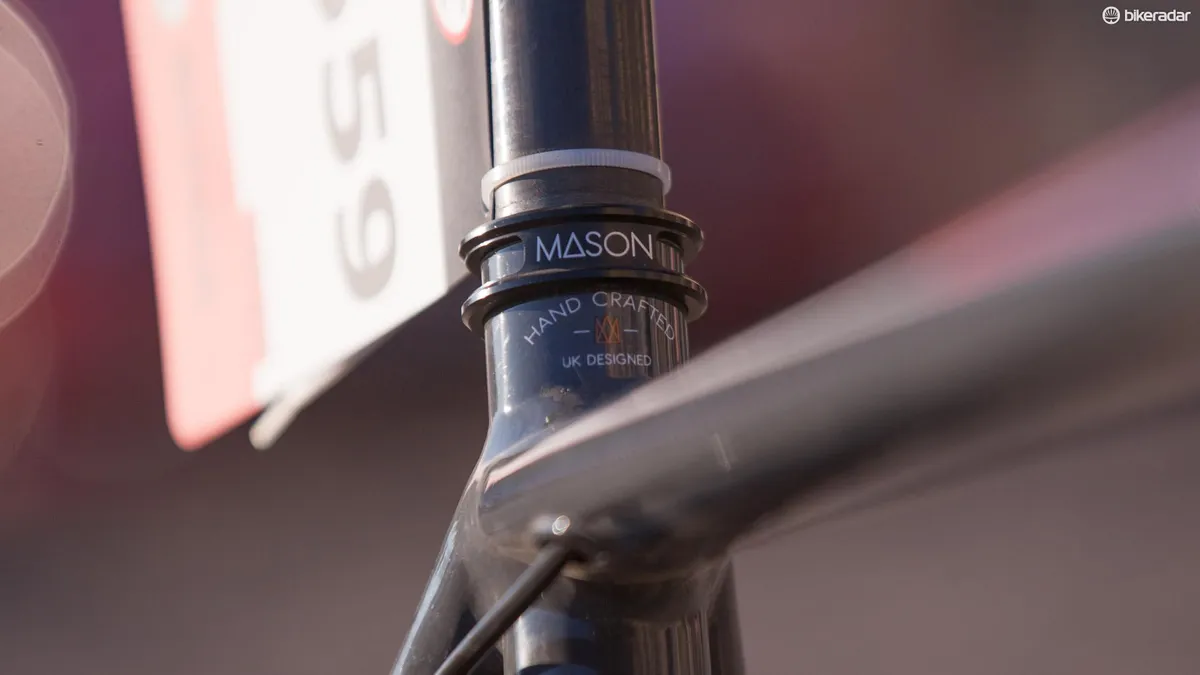Holy Week. The Tour of Flanders on the first Sunday of April, followed the next Sunday by Paris-Roubaix. With rabid speculation about Roubaix race favorites, amateur bike riding and Belgian beer drinking in between.
I love this week, and return whenever I can to cover the pro races and ride the cobbled bergs of Flanders. But the Roubaix cobbles? I hate those things.
My friend and former coworker Nick Legan and I did the first Paris-Roubaix Challenge years ago, and both swore never again. Yet, I’ve found myself back on those bone-rattling stones multiple times since. And each time I’ve come away thinking, I need bigger tires…
A new Horizon — and a race bike vs monstercross
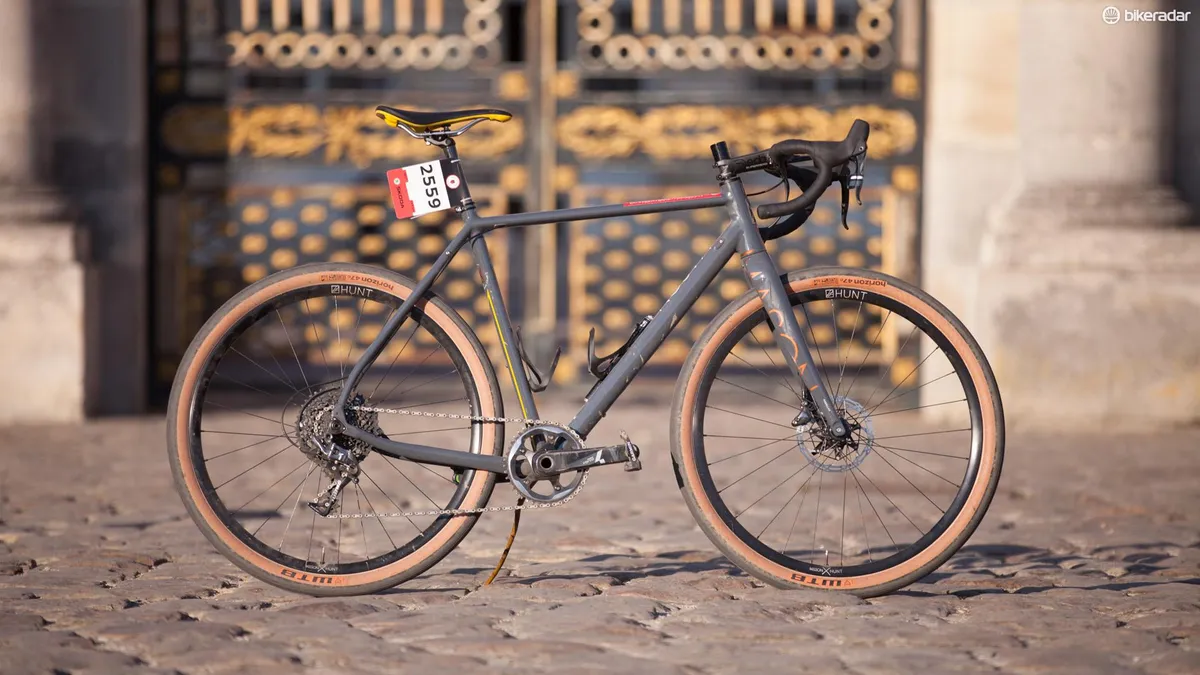
So, this year I came armed with the big guns — WTB’s 650b ‘Road Plus’ Horizon tires, which are labeled a girthy 47c.
I put these on a Mason Bokeh, one of these new school adventure road bikes that can jump between 650b and 700c. Company founder Dom Mason was kind enough to loan me this bike with a SRAM Force 1x build kit and his Mason X Hunt 650b tubeless wheels.
BikeRadar videographer Reuben Bakker-Dyos filmed the week as I rode this big horse and our social media maestro Josh Evans piloted a Scott Foil (the winning aero bike from the 2016 Paris-Roubaix) with 28mm clinchers.
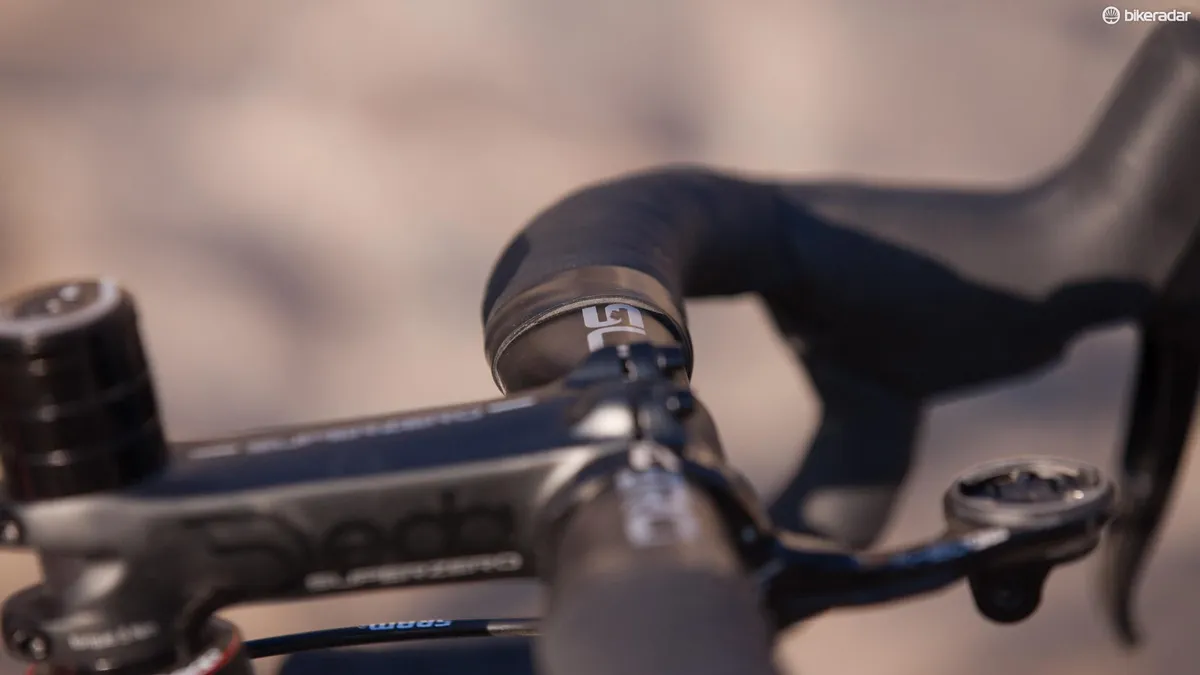
Josh and I made fun of each other’s bike choice.
Then we made a video throughout the week as we tested the two head-to-head. Some was objective, averaging multiple power-based runs on the 17-percent Koppenberg and two flat stretches of cobbles. And some was subjective — ‘so, how did that feel?’ The basic idea was to suss out what type of bike would be ideal for amateur riding around Holy Week, by taking two bikes on opposite ends of the spectrum.
Stay tuned for the video.
Jeep gearing, a taut chain and 38psi on the old stones
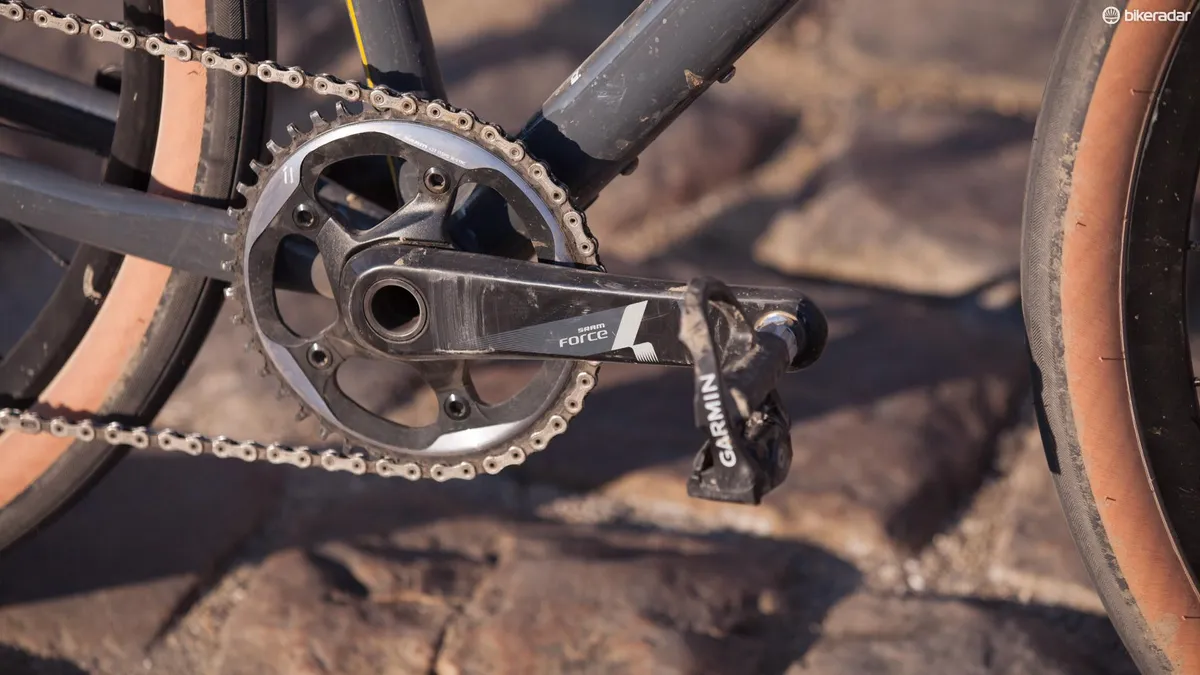
When riding slowly uphill on the cobbles, the difference in tires wasn’t as hugely different as the marked changes in gearing and weight. Josh and I switched bikes back and forth for comparison. The 42t by 42t on the Mason let us basically spin up the steeps, albeit slowly, while the Scott’s low 36/28t gear meant a lower cadence.
But when one of us would attack up a berg on the 7.5kg / 16.5lb Foil, it was much harder to respond on the 9.6kg / 21lb Mason — both the rotational mass of the big tires and the overall weight of the bike couldn’t be ignored when trying to accelerate uphill.
Descending on cobbles, however, the difference in tires was laughable — we’d carefully creep down on the Scott, but absolutely fly on the Mason. Similarly, motorpacing behind Reuben’s car on cobbles (for filming, people!) felt safe on the Mason. On the Foil, it seemed like perhaps not the best idea…
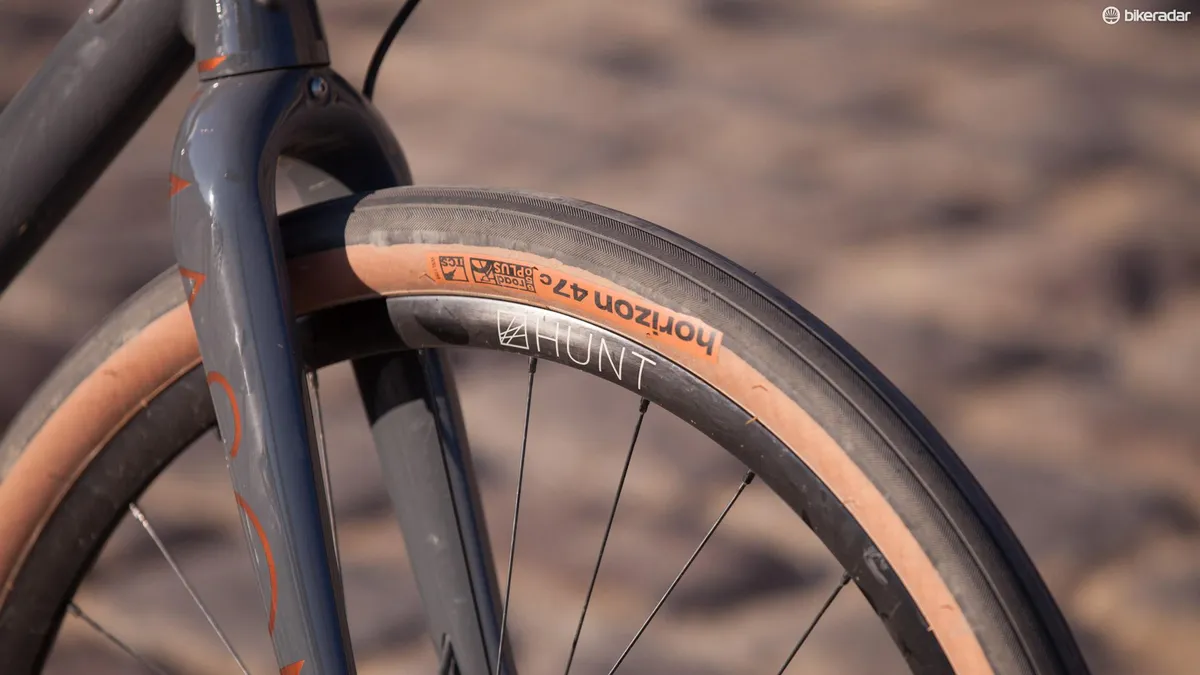
Without giving away too much of the testing detail from the upcoming video, I’ll just say that a world-class race bike is indeed faster than an adventure bike, even on the cobbles. Surprise!
But what the power meter says and what our hands and tail ends reported are two different things.
For me, the sweet spot for the cobbled roads of Flanders would be somewhere in between these two bikes. I’d like slightly more width than the Foil's 28c tires, and probably a compact crank instead of the 52/36t. Also, disc brakes, please. The pros may need quick wheel changes and light bikes, but when you’re doing sportives with thousands of other chuckleheads in the rain, stopping easily is important.
On the other end of the spectrum, the 650b monster truck tires were a bit of overkill for Belgium. However… the horrendous, so-called roads of Paris-Roubaix still loomed in our future.
And then, into hell
After a few more beautiful days of riding and wandering around the Flemish countryside, we headed to France to ride the Roubaix sectors.
On day one, we jumped in with the folks from Specialized for a little recon. I switched over to a Specialized Roubaix while Josh stuck with the Foil.
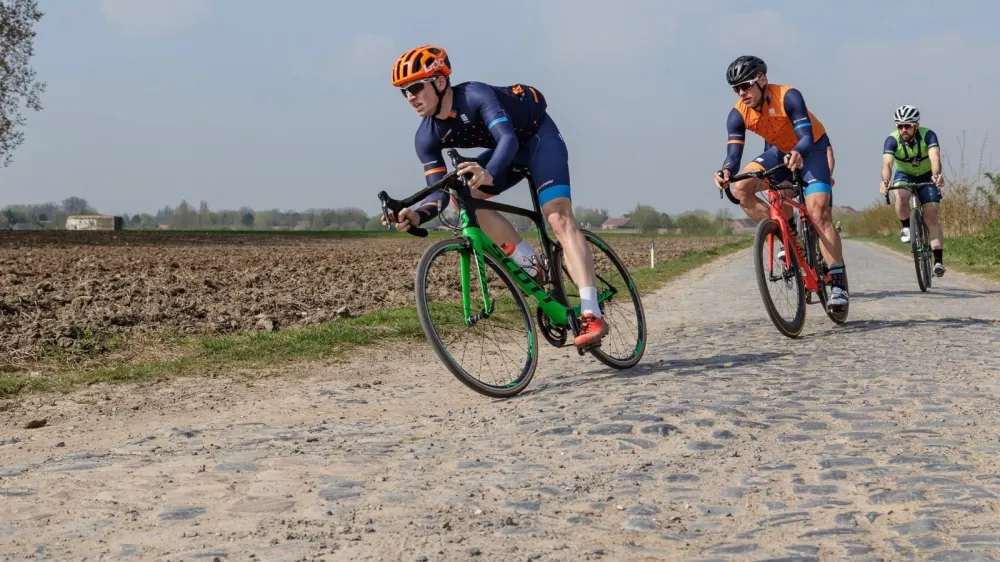
Now as I said earlier, I had done the original Roubaix sportive years ago and swore never again. The Roubaix cobbles and the Belgian cobbles are two completely different things — like punk rock and classical music. And while the Foil is comfortable as aero bikes go, it’s still an aero bike made for racing on paved roads, not the barbaric monstrosities that are the Roubaix sectors.
But the Mason Bokeh… this big baby was born to sail the gnar. With its plump, 47mm-wide tires set at just under 40psi, I was happy as a clam. Make no mistake, the cobbles still rattled me, and I sought the refuge of the dirt gutters and grass like everyone else, but the difference between the Foil and the Mason — and even the Roubaix and the Mason – was like stormy night and sunny day.
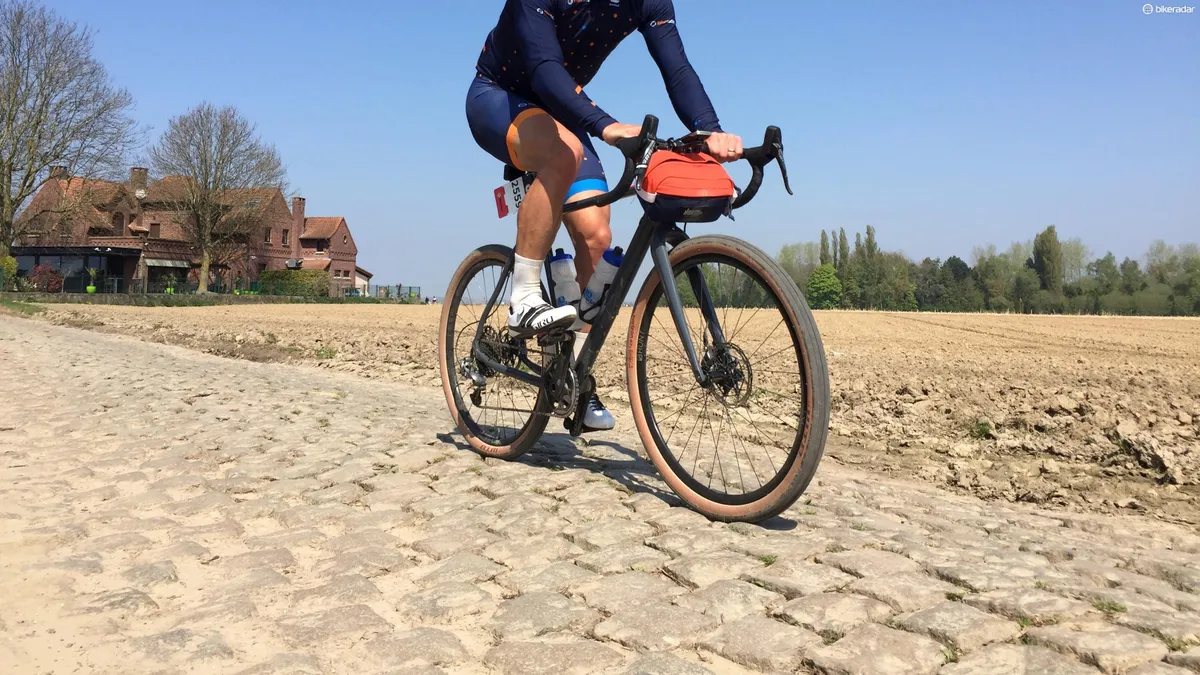
I also really liked the geometry. The head tube is a normal length, not a skyscraper, and the semi-slack head angle (71.5 degrees) adds to the bike’s stability at speed over rough stuff.
Besides the tires, the SRAM clutch derailleur did its thing well. My bike was quiet over the stones, as the chain held taut. Occasionally I could hear the internal housing tapping against the inside of the frame, but mostly I could only hear other riders’ bikes clacking along, their chains whipping the stays with abandon.

The 145km Roubaix Challenge runs in two loops, beginning and ending at the Roubaix velodrome. The first 50km are on pavement, where the WTB tires did not shine, but they didn’t sink me either. I would guess they probably cost an extra 30 watts or so when I took my turns on the front. And aero they are not!
But once we hit the Arenberg, I was all grins. Not only were the rough-strewn cobbles less rattling, they were less stressful. I felt comfortable quickly changing lines or taking a hand off the bars to look behind me.
So, to answer the original question – if we were to return, what bikes would we bring? If we were just doing Flanders, I’d probably lean towards a more traditional road bike, but with disc brakes and tires in the 28 to 32mm range. But if we venture back to the beast that is Roubaix, I am all about those wide 650b road tires and a quiet clutch derailleur.
Stay tuned for the full video. In the meantime, check out the detailed gallery of the Mason Bokeh above.


